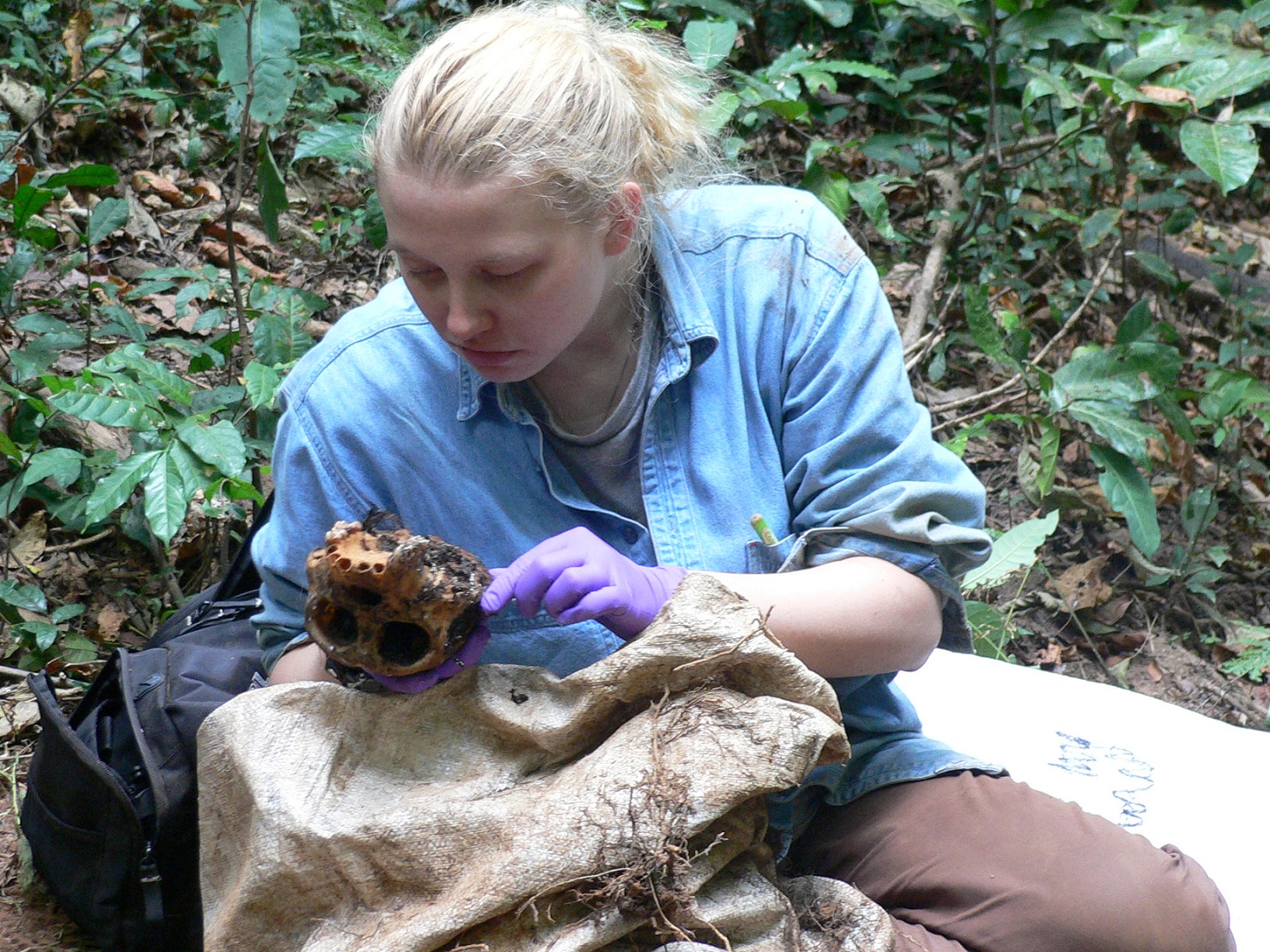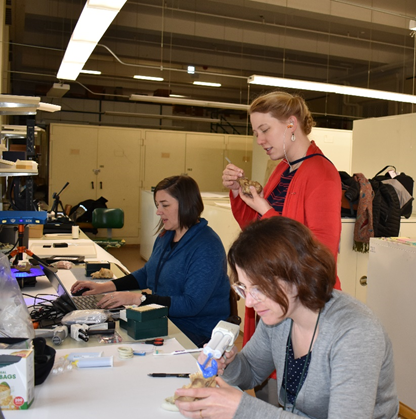Among the things that make us human are the ways that we interact with one another and live in groups, what we eat, and our long, complex life spans. A thorough biological understanding of these phenomena is possible through comparisons with our closest living relatives: other primates. This evolutionary context provides a way for us to develop biologically relevant and culturally appropriate solutions to problems like violence and disease. I analyze primate skeletons for signs of injury and illness to inform us about life histories, sociality or group living, and diet. Skeletal analysis is especially useful when it is difficult to observe behavior directly, such as for critically endangered species, nocturnal animals, or in the case of rare but important behaviors, like fights and other aggressive interactions. Examining skeletons and teeth also allows for direct comparison with and better interpretation of the fossil record: physical remains whose stories can only be told by creating narratives based on the hard tissues of living animals.

Dr. Kirchhoff exhumes a chimpanzee skeleton at Gombe National Park, Tanzania
Previous work analyzing injury and illness patterns in primate skeletons is limited, however, and often it has been descriptive rather than hypothesis driven. My work expands what is possible through skeletal analysis of nonhuman primates by focusing on specific questions related to the ways in which we evolved, integrating skeletal data with other sources of information such as behavioral observation, demography, and shape analysis. I also create direct links between teeth, bones, and behavior by analyzing skeletons with known life histories. My ongoing projects rely on innovative collaborations to produce unique and valuable datasets that help to tell the human story. These projects include:
- Contrasting shape variation in the skulls of primates with different feeding adaptations in both normal and diseased conditions (with Dr. Siobhán Cooke, Johns Hopkins University School of Medicine, and Dr. Claire Terhune, University of Arkansas).
- Examining group formation in baboons at Gombe National Park, Tanzania, and the ways in which group size affects baboon demography and population density, nutrition, growth, and disease (with Dr. D. Anthony Collins, Jane Goodall Institute, Dr. Rebecca Nockerts, University of Minnesota, Dr. Jason Massey, Monash University, Dr. Michael L. Wilson, University of Minnesota).
Research Group Personnel
Current student assistants:
- Jessica C. Gomez
- Christina Sapata
- John Zeman
Alumni:
- Matthew Merwin (B.S. 2021)
- Shannon O'Connor (B.A. 2020)
- Tyler Stein (B.S. 2021)
Selected Publications
- 2021. D.R. Mitchell, C.A. Kirchhoff, S.B. Cooke, C.E. Terhune. “Bolstering geometric morphometrics sample sizes with damaged and pathologic specimens: Is near enough good enough?." Journal of Anatomy 238(6);1444-1455.
- 2021. M. Merwin, C.A. Kirchhoff, D.R. Mitchell, S.B. Cooke, C.E. Terhune. “Contrasting craniodental lesions in platyrrhines.” American Journal of Physical Anthropology 174(S71): 70.
- 2021. T. Stein, C.A. Kirchhoff, D.R. Mitchell, S.B. Cooke, C.E. Terhune. “Cranial suture fusion does not predict presence of craniodental lesions in cercopithecoids.” American Journal of Physical Anthropology 174(S71): 100.
- 2019. C.A. Kirchhoff. Life and Death in the Gombe Chimpanzees: Skeletal Analysis as an Insight into Life History. Cham, Switzerland: Springer.
- 2018. C.A. Kirchhoff, M.L. Wilson, D.C. Mjungu, S. Kamenya, D.A. Collins. “Infanticide in chimpanzees: Taphonomic case studies from Gombe.” American Journal of Physical Anthropology. 165(1): 108-122.
- 2018. H.M.S. Lloyd and C.A. Kirchhoff. Case study: Scoliosis in a bonobo (Pan paniscus). Journal of Medical Primatology. 47(2): 114-116.



